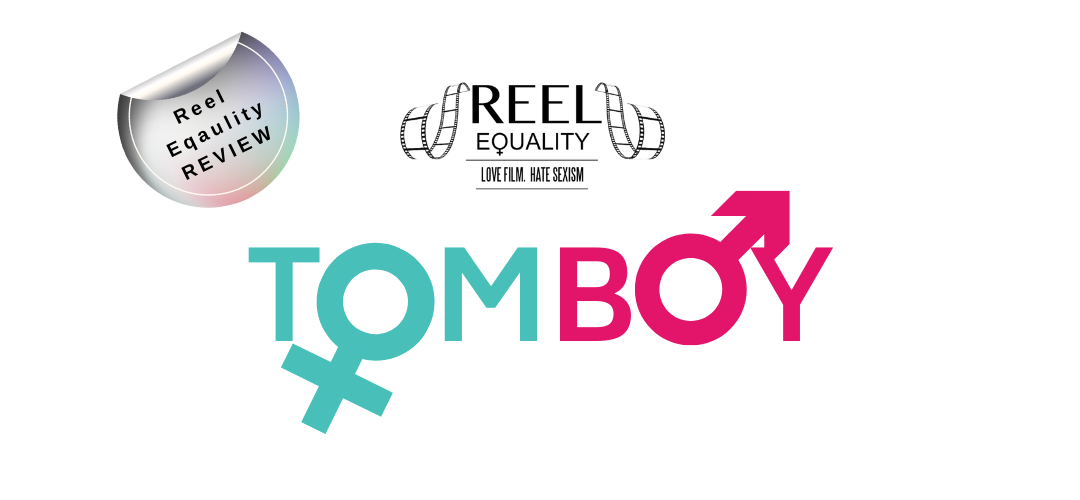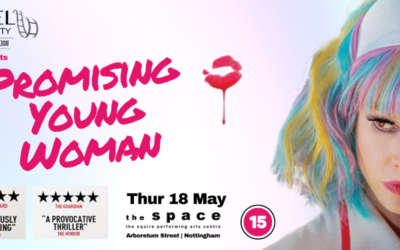Reel Review: Tomboy
By Sarah, Reel Equality Film Club Volunteer, 17th March 2021, 1pm.
Equation’s Reel Equality Film Club carefully chooses films for screenings, using a detailed checklist of considerations (equation.org.uk/reelequality). Few films tick all the boxes. The Bechdel Test* helps us decide if the film tells a woman’s story. Other considerations include avoiding films in which women are portrayed only as victims of violence, only in stereotypical female roles (such as carers, or home-makers), or if women are there only for sex appeal. We seek to portray a diversity of women’s stories of different experiences and backgrounds. Here’s a window onto some of our thoughts…
From the perspective of gender equality, what was good about Tomboy?
Tomboy is a coming-of-age story following 10-year old Laure, a girl who rejects the expectations of femininity which adults place upon other girls of the same age. Laure decides to live social life as a boy called Mikael. What makes Tomboy stand out from any Hollywood film about childhood is how it addresses its main character and the question of their gender. Although mainstream cinema occasionally hints upon LBGTQ issues in live-action children’s films, those characters are never the central protagonist and they are almost always a comedic subject for their sexual preferences. Tomboy, on the other hand, challenges this by sensitively exploring gender identity and sexuality issues in children. Laure is given the opportunity to become Mikael when the family move to a new neighbourhood. The children there do not question Laure’s gender because Laure looks and acts “like a boy”. As Mikael, our main character gains the respect of the local boys by being good at football and fighting, spitting and talking like the other boys do. The film explores how gender is constructed by society though actions and conventions, rather than being necessarily biological.
One of the most evident ways in which the film highlights gender as a social construct is by contrasting the mother’s pressure for her child to be “feminine” against the reaction of Jeanne, the little sister, when she finds out that her sister Laure is known as a boy to her friends. At first, Jeanne is confused but then accepting, because she is too young to fully understand the social implications of her sibling’s choice. Jeanne demonstrates that gender is not an inevitability but an individual’s choice to be who they want to be. She accepts Laure wants to live as a boy, and although she doesn’t completely understand why, she accepts this choice because Laure is still her older sibling that she loves.
The film also stands out from mainstream cinema in its approach towards body issues of pre-adolescence. In several scenes, Laure looks at, stretches and pulls at her body in front of the mirror. This raises the awareness that even at age 10 children are concerned about how their bodies look and about how their bodies will develop as they grow older. This issue is pivotal to childhood development, and although it is almost completely unexplored in film narratives, cinema is one of the major influencing factors in what children believe is normal for bodies to look like. Whether it concerns being transgender, being overweight or underweight, having a disability, being a certain race or demographic, body issues are rarely explored in cinema despite the screen being the place where audience are most exposed to bodies. By exploring Laure’s relationship with her body, Tomboy highlight’s the struggles that everyone faces to find some way to feel normal.
Finally, the film also embraces the discovery of sexuality in the pre-teen stage. We see Laure, as Mikael, learn from Lisa about sexuality in a way that mainstream cinema would not dare to depict of two children. They share intimate experiences of young love, and Mikael’s first sexual experience. The film highlights how at this age, children are beginning to explore their sexuality and develop into the people they become when they are adults. It reflects a realistic idea of childhood rather than the naïve way Hollywood films usually portray children.
What was problematic about the representation of gender in this film?
The main problem for me with Tomboy is that it seems to fall short on exploring the challenges that transgender people can face when revealing their identity to society. Although Laure does encounter problems, they are very rarely resolved and no answers or solutions are offered as a way for her to continue on either as a boy or as a girl. At only 82 minutes long, the film leaves the viewer perhaps desiring more exploration of how Laure could find happiness as Mikael, and by accepting a transgender identity.
A final problematic point to note with Tomboy is that it does not explore Lisa’s feelings towards Laure as a girl. There is much room in this film for Lisa to realise that sexuality is fluid, and that she can also like girls in a romantic way too. For a person of her age, it is most likely that Lisa would experience a range of emotions, and it would be intriguing to see how she begins understand her sexuality. Unfortunately, this aspect goes unexplored and it is unclear what Lisa’s feelings are to Laure at the end of the film.
LET US KNOW WHAT YOU THINK – SHARE YOUR REVIEW AT FACEBOOK.COM/REELEQUALITYNOTTS
Other Events
Promising Young Woman
Promising Young WomanThur 18th May 2023The Space - the Squire Performing Arts Centre | Arboretum Street, NottinghamMore than a screening - Stalls | Food | SpeakersStudents: free | General public: Pay what you can This May, Reel Equality Film Club will be returning to...
Other Ways to Get Involved
Reel Equality
Equation’s award-winning Reel Equality Film Club shows great movies that tell women-centred stories and challenge gender stereotypes. Join our campaign for better representation of women on screen.
Campaign With Us
We campaign in Nottingham and Nottinghamshire to raise awareness of domestic abuse, gender inequality and signpost survivors to safety and support.
Social Media Ambassadors
Campaigning online is a great way to take action and can be done from anywhere.
How you can help
No matter how much time, money or resources you can afford to give, your support will make a difference.
£10
Give monthly
Could pay for four children
to take part in our early intervention projects
£30
Give once
Could pay for one primary school child to receive our healthy relationship education program
Support equation
Check out the other ways you can support us



